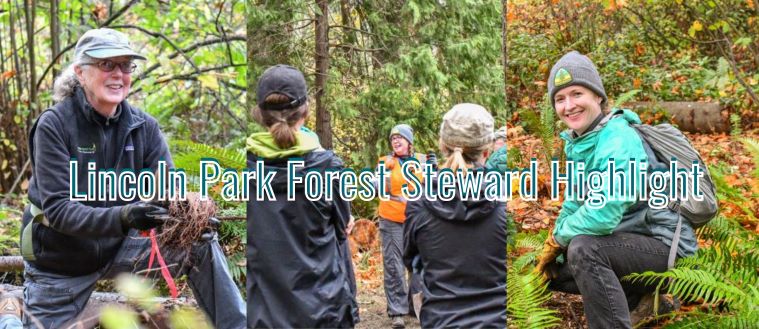
The Lincoln Park Forest Steward team is a multigenerational group of three women: Sharon Baker, Lisa Zander, and Lisa McGinty. Together, they lead the stewardship of the forest in Lincoln Park and continually engage the community in the process. Their work has brought community together, and has not gone unrecognized. In fact, Sharon received a Denny Award in 2018 for her work and commitment to stewarding Lincoln Park! We interviewed the three of them to learn more about their work and who they are. If you want to see their work in person head on over to Lincoln Park and if you would like to get involved, check for volunteers events here.
What lead you to be interested in doing this work?
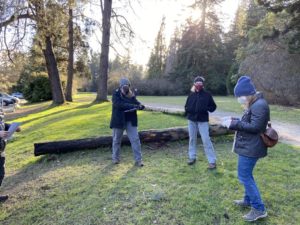 Sharon: In early 2000’s I created a conservation easement on my hillside property just north of Lincoln Park. I needed to learn more about native plants, so I joined the Washington Native Plant Society (WNPS). I met restoration volunteers in the park, took the WNPS training, and began working in Lincoln.
Sharon: In early 2000’s I created a conservation easement on my hillside property just north of Lincoln Park. I needed to learn more about native plants, so I joined the Washington Native Plant Society (WNPS). I met restoration volunteers in the park, took the WNPS training, and began working in Lincoln.
Lisa Z: I have a background in ecology, botany, and volunteerism. When I moved to Seattle, I wanted to find a project that increased biodiversity in urban spaces, as well as get to know the people, plants, and animals of my new home.
Lisa M: I was running through Lincoln Park, saw a volunteer group working on the forest edge, and immediately knew I wanted to help. I contacted Sharon Baker (founder of Friends of Lincoln Park) and after becoming a regular volunteer with FLiP, she convinced me to become a forest steward.
How long have you been a Forest Steward at Lincoln Park?
Sharon: 15 years.
Lisa Z: I have been volunteering at Lincoln park for going on 4 years while teaching middle school science full time. I earned my Forest Steward status in 2018, but am basically a back up steward at Lincoln. Sharon, and now after her retirement, Lisa McGinty, do all the heavy lifting of coordinating volunteers, and creating our restoration plans.
Lisa M: Six years (total), but I went through the GSP forest steward training in 2010.

What is the most rewarding part of being a Forest Steward and working in Lincoln Park over the years?
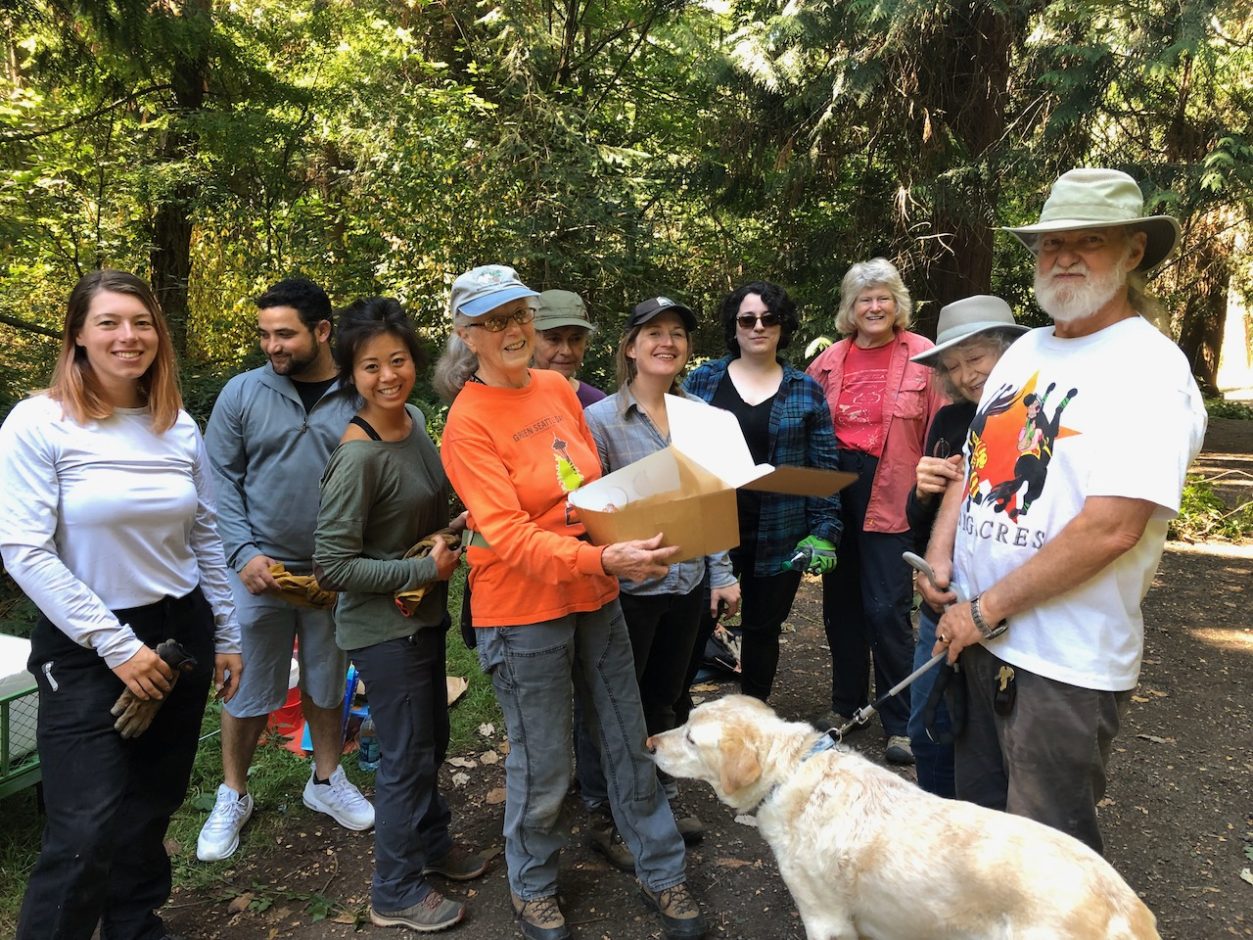
Sharon: Making a difference for the restoration of the forest.
Lisa Z: Volunteering at Lincoln Park is like medicine. There’s something very therapeutic about digging and weeding in the presence of good people. After several hours spent under the trees–drinking tea, exerting my body, and telling stories–I leave feeling like the forested park restored me, instead of the other way around!
Lisa M: I think the most rewarding part is being able to work in the forest with volunteers and have the opportunity to learn from each other.
What is the best part about the Lincoln FS Team?
Sharon: Agreeable, fun people, and shared values.
Lisa Z: I love how we are a multi-generational team. Everyone is teaching each other, and not just about plants! Our team is kind, yet tireless and fierce in our dedication to creating a better world, environmentally and socially.
Lisa M: The best part of our team is we compliment each other’s strengths and we have a LOT of fun working together!
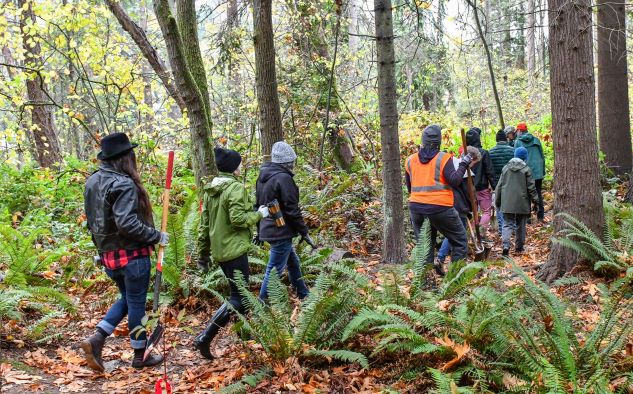
Who are some of the groups/individuals who have made an impact on the park?
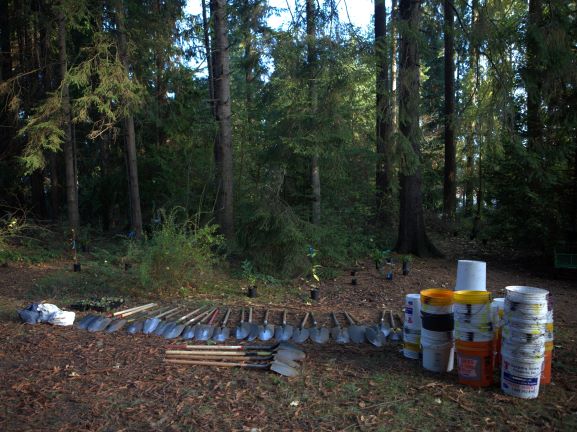
Sharon: GSP staff at Seattle Parks and Forterra.
Lisa Z: The couple that brought us baked goods from Bakery Nouveau before the pandemic began. Not everyone has the time or ability to stop and volunteer with us, but it’s good to know we are being seen by those that also love Lincoln Park!
Lisa M: We have a core group of regular community volunteers that have dedicated years of service to our restoration efforts.
We also have had wonderful support from student groups (local K-12 schools and universities), local Seattle businesses and community groups as well as Earthcorps and Americorps members. Past and current UW students who choose FLiP for their Program on the Envrionment Capstone internships have also made a positive impact!
What do you look forward to most about the future of Lincoln Park and the FS team?
Sharon: Continuing the work.
Lisa Z: I look forward to seeing the trees we plant grow taller. And if I can be so bold, I hope we will continue building relationships between the community and the non-human life in the park, as Dr. Robin Wall Kimmerer describes in her book, Braiding Sweetgrass.
Lisa M: I look forward to helping move the GSP zoned/sites into stage 4 of restoration and collaborating with our team to identify and learn best restoration practices as they evolve over time. In the future, I’d be honored and excited to incorporate traditional ecological knowledge with our restoration practices.
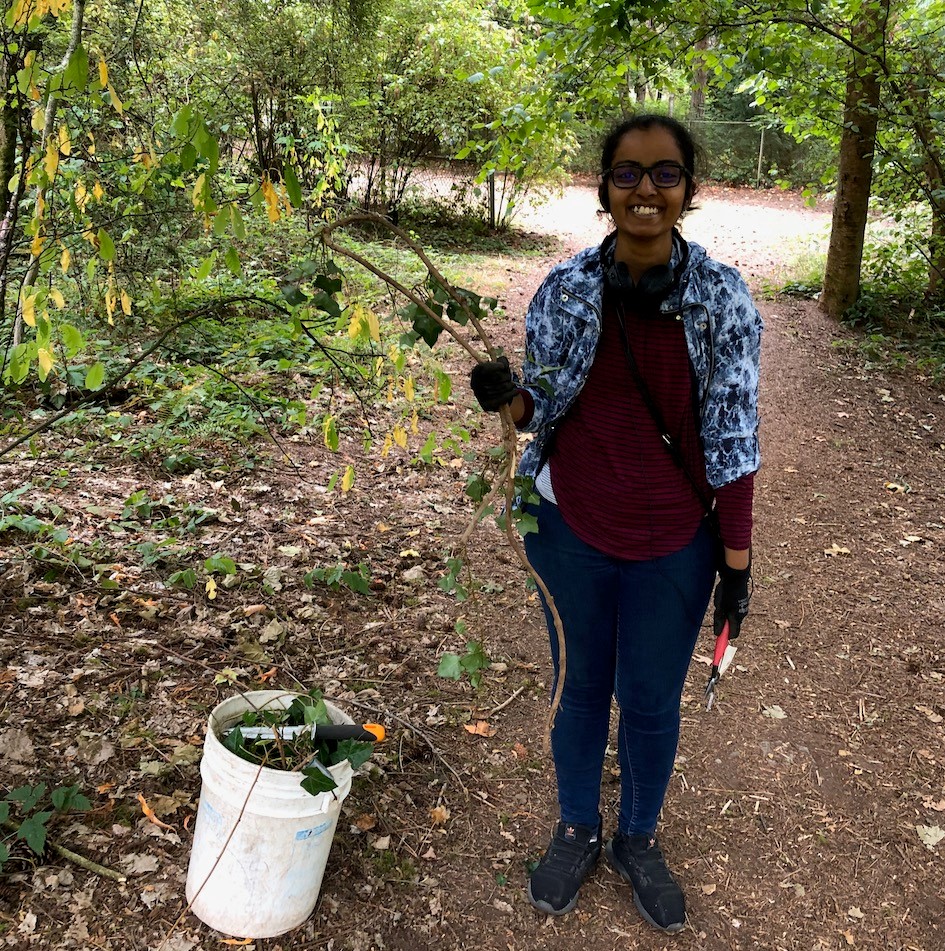
What is your favorite native plant?
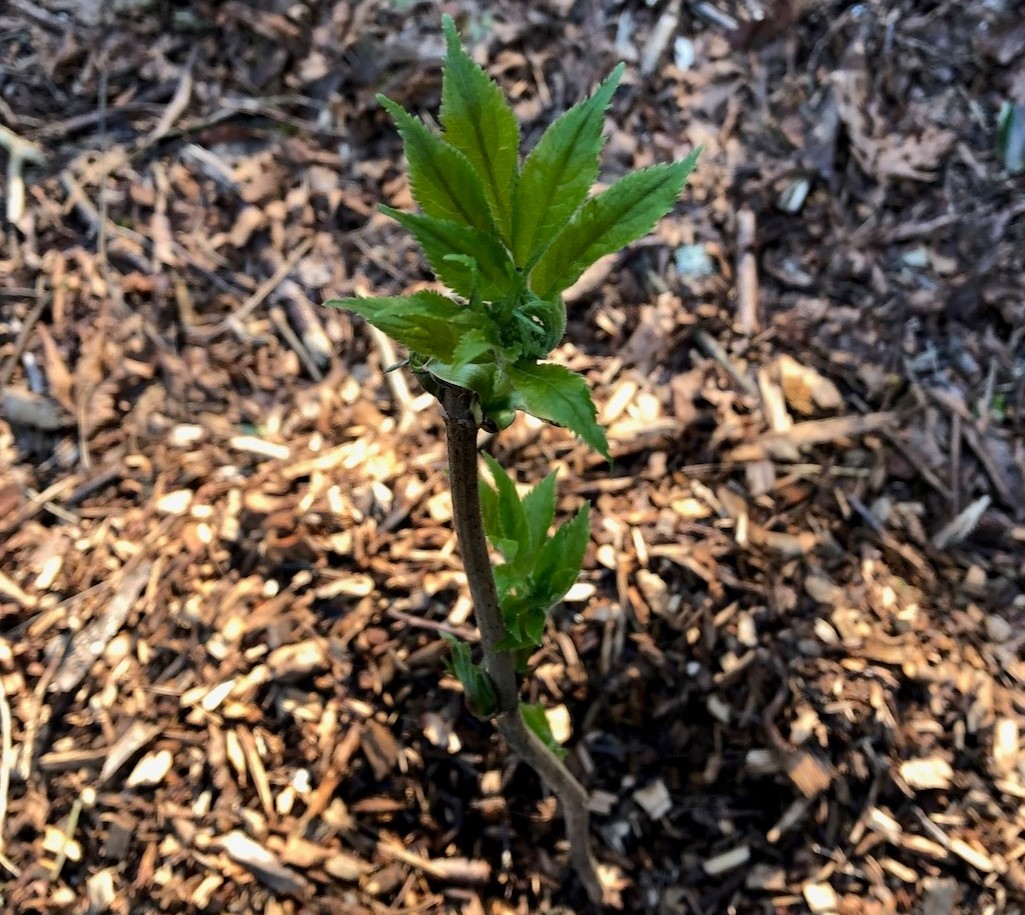
Sharon: Pacific madrone.
Lisa Z: Picking a favorite native plant is impossible! Although, I am fairly partial to ephemeral spring blooms, like trillium and skunk cabbage, or as Sharon would rather call it, “Swamp Lantern.”
Lisa M: Pacific Madrone (arbutus menziesii) and Osoberry (Oemleria cerasiformis).
What is your favorite memory from a volunteer event?
Sharon: Recruiting Lisa McGinty to be lead steward.
Lisa Z: One of my favorite memories is from Green Seattle Day 2019, when Lisa McGinty coordinated with a Girl Scout troop and their families to plant with us. Those little girls brought so much magic to the park that day! One had made a hand-drawn map of the park; she would stop and edit it as we worked, adding place names she’d invented and new parts of the park as she learned about them.
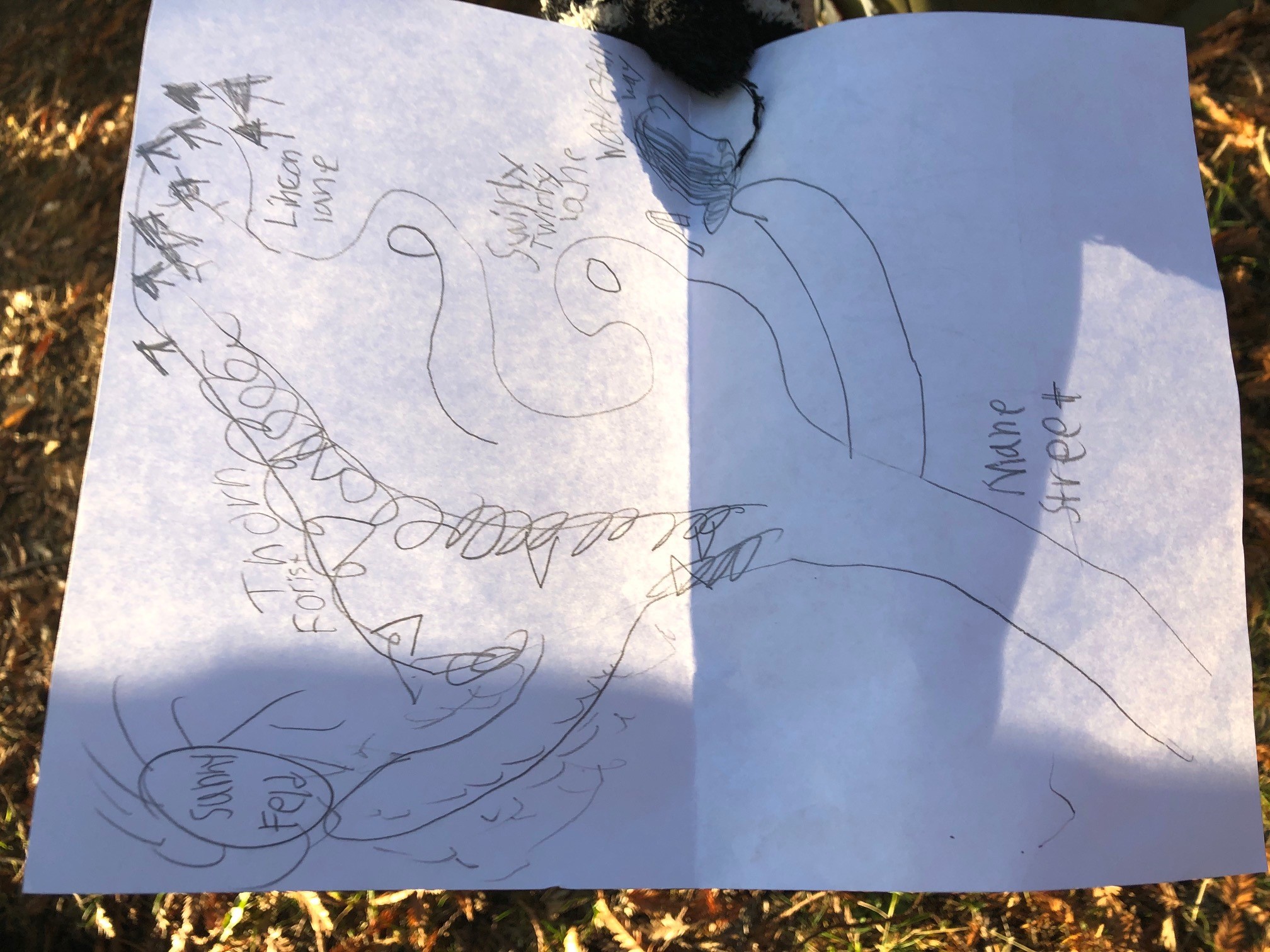
Other scouts decorated their newly-planted trees with rings of sticks and pine cones. It charms me, to be a part of this continuation of love and relationship to the forest.
Lisa M: Ahhhh-so many! One that stands-out: We had a volunteer that had never done forest restoration work before…never held a hand clipper or used a shovel. I’ve never seen anyone so excited about pushing a wheelbarrow for the first time. Her excitement (and smile) throughout the entire event, was contagious.
Why do you feel stewardship of the land and restoration important?

Sharon: Developing healthy urban forests are a critical part of slowing climate change.
Lisa Z: Since time immemorial, these lands have been stewarded by the Duwamish and Coast Salish peoples. Lincoln Park is a second-growth remnant of the vast coastal forests that were here before people with my ancestry destroyed them through logging and colonialism. It feels bold to think of myself as a land steward, under the weight of this history, but attempting to repair even a small piece of the damage done, even as damage continues, feels like the most right and hopeful thing I can do for a better future. I would encourage everyone to choose a piece of land to be in relationship with, be it a park or their own backyard.
Lisa M: I feel stewardship of the land and restoration is important because we are connected to our natural environment in so many ways. Without protection through restoration, so many of those connections will be lost.
Thank you from the bottom of our hearts to all who have contributed to the stewardship and community building at Lincoln Park. If you are interested in staying up to date with all things Friends of Lincoln Park you can visit their website or follow them on Facebook and Instagram.
